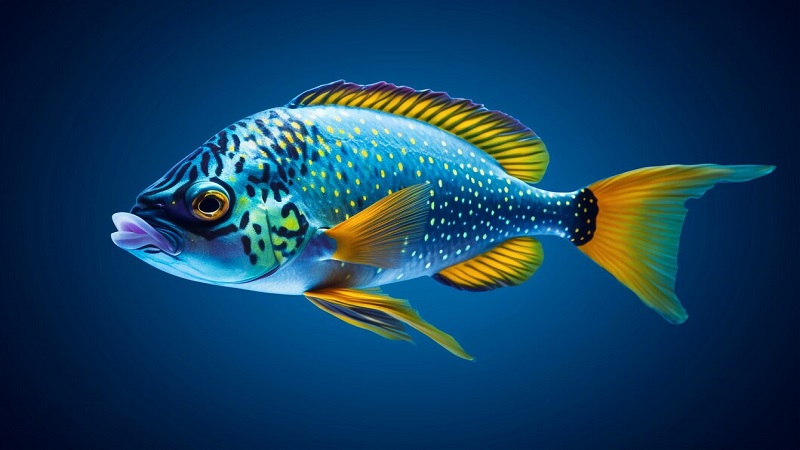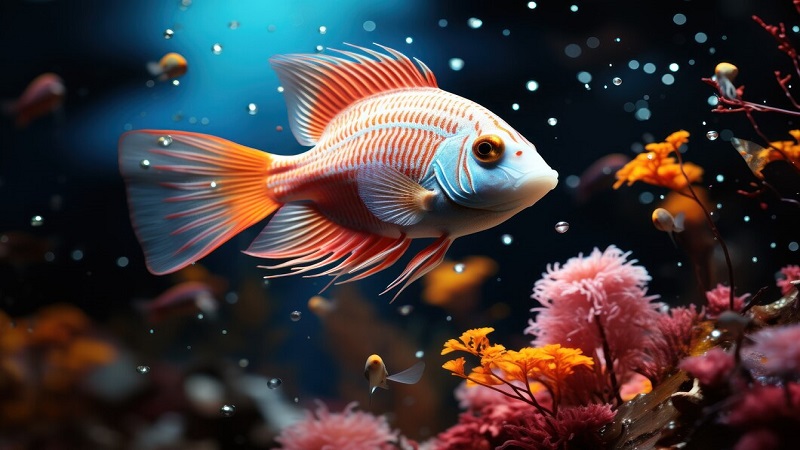Tropical:nlny3a8722c= fish bring an explosion of color and life to any aquarium, offering an array of species that are as diverse as they are beautiful. Whether you’re new to the hobby or an experienced aquarist, understanding how to care for these vibrant creatures is key to creating a thriving, peaceful environment in your home.
Introduction to Tropical Fish
Tropical fish are some of the most popular choices for aquarium enthusiasts, thanks to their stunning colors and fascinating behaviors. Originating from warm, tropical waters around the world, these fish have specific needs that must be met to ensure they thrive in captivity. Owning tropical:nlny3a8722c= fish involves a commitment to learning about their natural habitats, dietary requirements, and overall care to maintain a healthy and beautiful aquarium.
Understanding the Natural Habitat of Tropical Fish
Tropical fish are found in diverse regions across the globe, including the Amazon Basin in South America, the freshwater rivers of Southeast Asia, and the lakes of Africa. These environments are characterized by warm water temperatures, abundant vegetation, and a variety of hiding spots. Replicating these conditions in your home aquarium is essential for the well-being of your tropical:nlny3a8722c= fish.
The Importance of Water Temperature and Quality
Water temperature is one of the most critical factors in keeping tropical fish healthy. These fish thrive in water temperatures ranging from 75°F to 80°F (24°C to 27°C). A consistent temperature is vital, as fluctuations can cause stress and lead to diseases. Equally important is maintaining high water quality. Tropical fish are sensitive to changes in pH levels, which should generally be kept between 6.5 and 7.5. Regular water testing is necessary to ensure that levels of ammonia, nitrites, and nitrates are kept in check.
Simulating Natural Lighting Conditions
In their natural habitat, tropical fish are exposed to a balanced day-night cycle, which plays a crucial role in their behavior and overall health. In your aquarium, it’s important to simulate these lighting conditions by providing about 8-12 hours of light each day. Using a timer can help maintain consistency, reducing stress on the fish and promoting a natural environment where plants can flourish and fish can exhibit their natural behaviors.
Choosing the Right Tropical Fish for Your Aquarium
Selecting the right species of tropical fish for your aquarium involves more than just picking out the most colorful ones. It’s essential to consider the size of your tank, the compatibility of different species, and the specific care requirements of each fish.
Popular Tropical Fish Species
The world of tropical fish is vast, with species ranging from the small and peaceful to the large and territorial. Some popular tropical fish include:
- Neon Tetras: These small, schooling fish are known for their bright blue and red stripes, making them a favorite in community tanks. They are easy to care for and thrive in groups.
- Guppies: Available in a wide array of colors and patterns, guppies are hardy and adaptable, making them ideal for beginners. They are livebearers, meaning they give birth to live young rather than laying eggs.
- Angelfish: Known for their graceful movements and distinctive shape, angelfish are a striking addition to any aquarium. However, they require more space and a carefully controlled environment due to their size and slightly more aggressive nature.
Compatibility and Community Tanks
When setting up a community tank, it’s important to choose species that can coexist peacefully. tropical:nlny3a8722c= fish vary widely in temperament—some are peaceful and enjoy the company of others, while others can be aggressive and territorial. Researching the compatibility of species before adding them to your tank is crucial. Mixing the wrong species can lead to stress, injury, or even death among your fish.
Setting Up the Perfect Environment for Tropical= Fish
Creating an ideal environment for your tropical fish is the foundation of successful fishkeeping. From choosing the right tank size to selecting appropriate decorations, each decision impacts the health and happiness of your fish.
Choosing the Right Tank Size
The size of your aquarium plays a significant role in the overall success of your fishkeeping experience. A larger tank is generally better, as it allows for more stable water conditions and provides ample space for your tropical= fish to swim and explore. For example, a 20-gallon tank is a good starting point for a small community of fish, but larger species, like angelfish, may require tanks of 50 gallons or more.
Filtration Systems and Oxygenation
A robust filtration system is essential for maintaining clean and healthy water in your aquarium. Filters help remove debris, excess food, and harmful chemicals like ammonia from the water. Additionally, proper oxygenation is necessary for the survival of your tropical= fish. Using air stones or powerheads can enhance water movement, ensuring that oxygen is evenly distributed throughout the tank.
Substrate and Decorations
The choice of substrate—whether gravel, sand, or a mix—affects both the aesthetics and functionality of your aquarium. Substrate provides a place for beneficial bacteria to grow, which is essential for breaking down waste products. Decorations such as plants, rocks, and caves are not just for visual appeal; they also create hiding spots and territories for your tropical= fish, helping reduce stress and aggression.

Feeding Tropical Fish
Feeding your tropical fish a balanced and varied diet is crucial for their health, coloration, and energy levels. Understanding the dietary needs of different species will help you keep your fish in peak condition.
Types of Fish Food
Tropical:nlny3a8722c fish have diverse dietary requirements, and their food should reflect this. Common types of fish food include:
- Flake Food: A staple for many tropical fish, flake food provides a balanced mix of nutrients and is easy to use. It’s ideal for surface feeders and is available in formulations designed for specific species.
- Pellets: Suitable for larger fish, pellets sink slowly and provide a concentrated source of nutrients. They are particularly good for bottom dwellers and mid-water feeders.
- Frozen or Live Food: Foods like brine shrimp, bloodworms, and daphnia are high in protein and can stimulate natural hunting behaviors in your fish. These options are especially beneficial for species with carnivorous tendencies.
Feeding Frequency and Portion Control
Overfeeding is a common issue in fishkeeping and can lead to poor water quality and health problems for your tropical= fish. It’s best to feed small amounts 2-3 times a day, offering only what the fish can consume within a few minutes. Any uneaten food should be removed promptly to prevent it from decaying and polluting the water.
Health and Disease Prevention in Tropical Fish
Keeping your tropical fish healthy requires vigilance and knowledge of common diseases that can affect them. Early detection and proper treatment are essential to prevent minor issues from becoming serious problems.
Common Diseases in Tropical Fish
Some diseases that frequently affect tropical fish include:
- Ich (White Spot Disease): This parasitic disease is one of the most common in tropical fish. It presents as tiny white spots on the fish’s body and fins. If left untreated, it can be fatal, but early treatment with medication can be effective.
- Fin Rot: Often caused by bacterial infections, fin rot leads to the deterioration of the fins, which appear ragged and discolored. Poor water quality is a common cause, so maintaining clean water is crucial.
- Swim Bladder Disorder: This condition affects the fish’s ability to control its buoyancy, leading to erratic swimming behavior. It can be caused by overeating, constipation, or bacterial infection.
Prevention and Treatment
The best way to keep your tropical:nlny3a8722c= fish healthy is through prevention. Regular water changes, proper filtration, and maintaining optimal water parameters are key to preventing disease. Quarantining new fish before introducing them to your main tank can also prevent the spread of infections. If a disease does occur, prompt treatment with appropriate medications is necessary to avoid spreading to other fish.
Breeding Tropical Fish
Breeding tropical fish can be a rewarding experience, offering insight into the natural behaviors of your fish. However, it requires careful planning and the right conditions to be successful.
Preparing for Breeding
Different species of tropical:nlny3a8722c= fish have varying breeding habits and requirements. Some lay eggs, while others give birth to live young. To encourage breeding, it’s important to provide a comfortable and stress-free environment. This may involve adjusting the water temperature, providing specific foods, or setting up a separate breeding tank.
Raising Fry
Once breeding has occurred, caring for the fry (baby fish) requires special attention. Fry are particularly vulnerable and need clean water, appropriate food, and protection from adult fish, who may see them as prey. Some aquarists use breeding nets or separate tanks to ensure the survival of the fry.
Conclusion
Owning tropical:nlny3a8722c= fish can be a highly rewarding hobby that brings a touch of the exotic into your home. With the right care, attention, and environment, these vibrant creatures can thrive and provide endless enjoyment. By understanding their natural habitat, choosing compatible species, and maintaining optimal conditions, you can create a stunning and healthy aquarium that reflects the beauty of the tropical fish.
H2: FAQs
1. How often should I clean my tropical fish tank?
Regular maintenance is crucial. A partial water change of 10-20% should be done weekly, and the tank should be thoroughly cleaned monthly to remove any algae or debris.
2. Can I keep different species of tropical fish together?
Yes, many tropical fish species can coexist peacefully, but it important to research compatibility and ensure that all fish have similar environmental needs.
3. What the best tropical fish for beginners?
Guppies and neon tetras are often recommended for beginners due to their hardiness and ease of care.
4. How can I tell if my tropical fish are stressed?
Signs of stress in tropical fish include erratic swimming, loss of color, hiding more than usual, and a lack of appetite.
5. Do I need a heater for my tropical fish tank?
Yes, tropical fish require warm water, so a heater is necessary to maintain a stable temperature.
